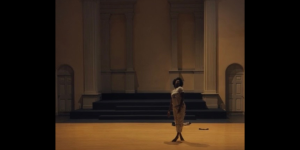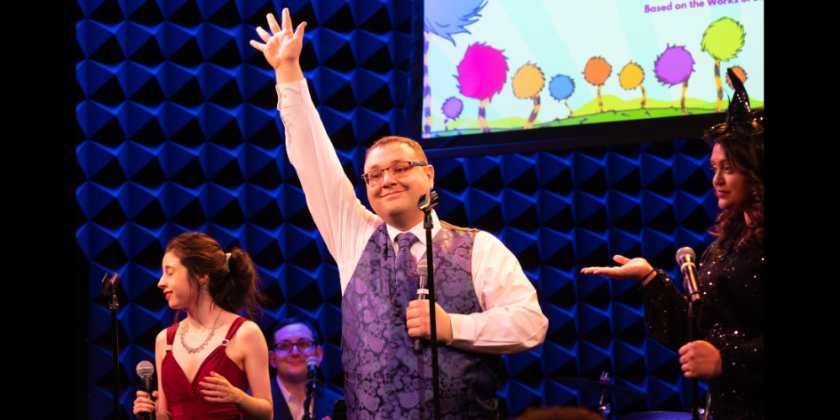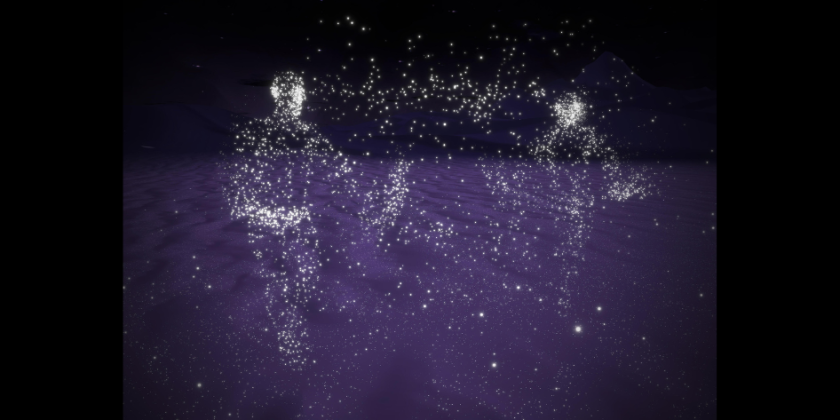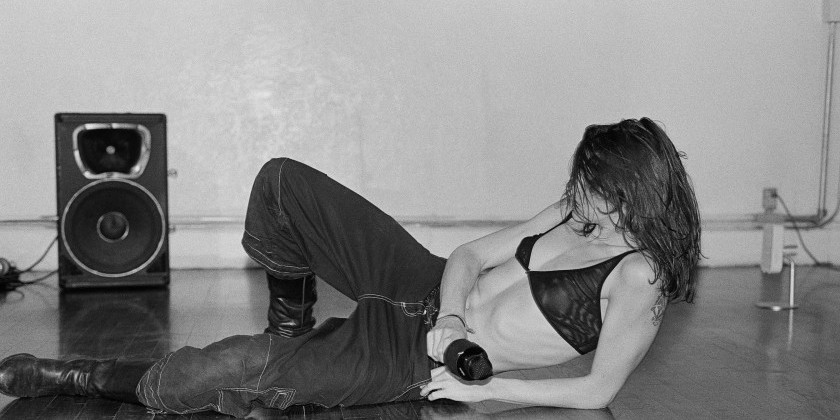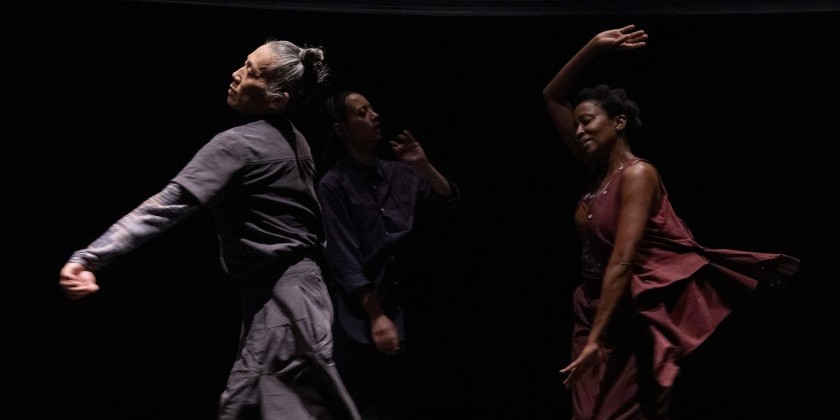THE DANCE ENTHUSIAST ASKS: Rachna Nivas On “Reclaiming the Divine Feminine”
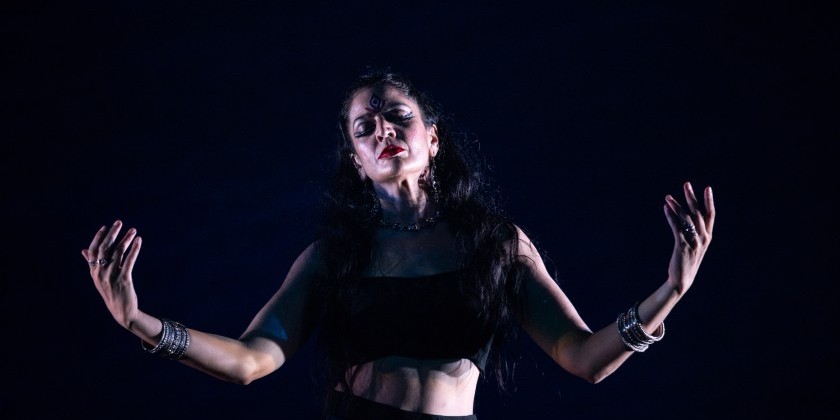
Happening at New York Live Arts on Friday, March 1 and Saturday, March 2
About the Artist:
Rachna Nivas is a performing artist, choreographer, educator, community organizer, and activist of Indian classical art with a mission to uphold its authenticity while thoughtfully advancing its modernity. She is one of the most accomplished kathak dance practitioners of her generation, called by critics “revelatory” and “charismatic” who “radiates power and grace”. Her work is rooted in elevating feminine consciousness and Eastern philosophies that challenge Eurocentric cultural paradigms. Her work's genesis came from a Dance Research Fellowship at the New York Public Library for Performing Arts under the theme Ecology and Dance.
Tickets: Click here
Catherine Tharin for The Dance Enthusiast: Rachna, you are considered one of the most accomplished kathak dancers of your generation. We are fortunate to experience your upcoming solo dancing. Could you please explain a bit about the solo form in kathak?
Rachna Nivas: Traditionally, kathak is a solo art form – ensemble work is actually a contemporary application of the dance. To become a solo practitioner, it demands rigorous training for many years by a master teacher/guru to achieve virtuosity in the dance form’s many facets: endurance, speed, and precision of footwork and pirouettes (tayari); virtuosity of rhythm and timing (layakari); grace and beauty (khubsurti); delicacy of that beauty (nazakat), and finally storytelling through dance mime (abhinaya).
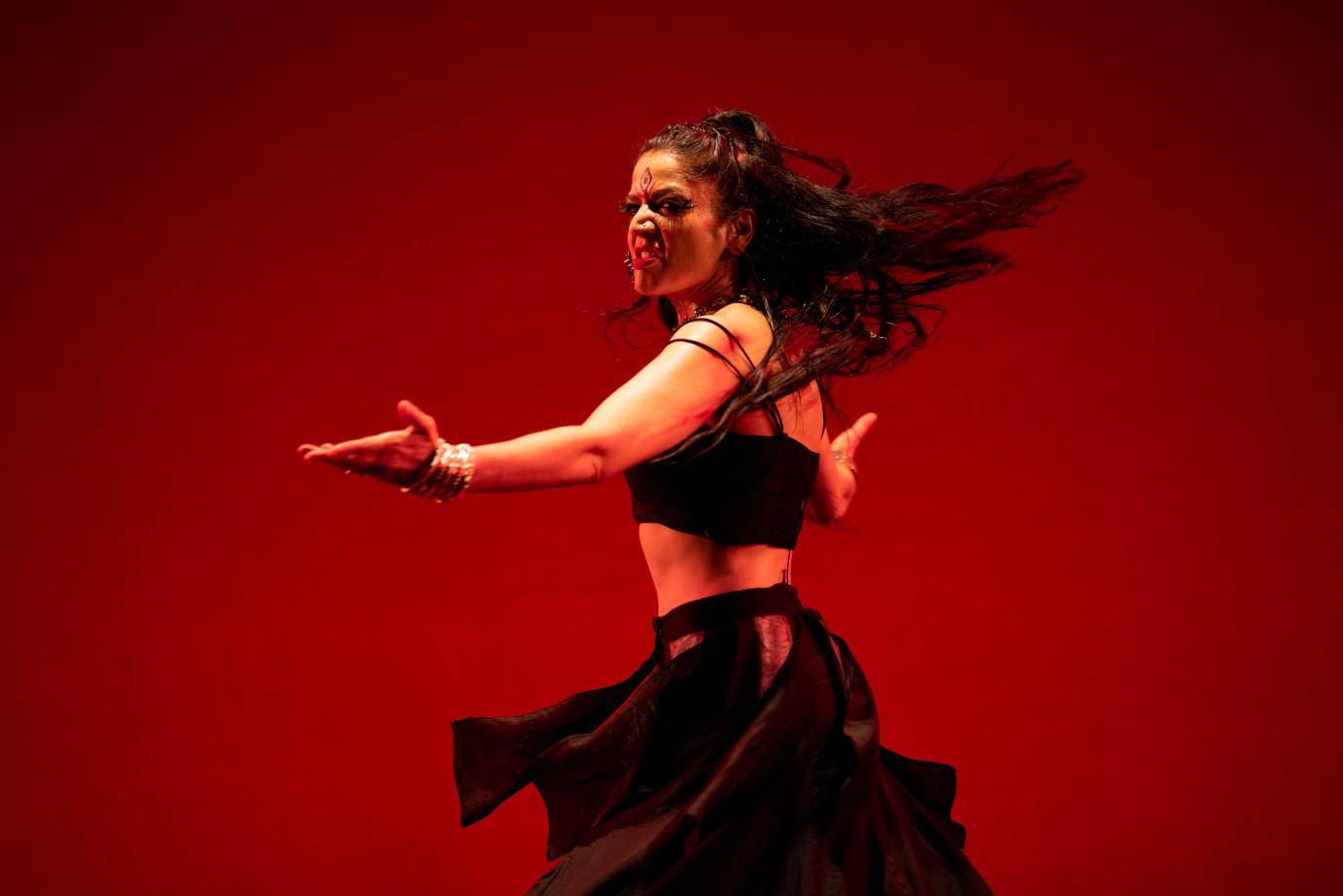
In a traditional solo performance, which is the pinnacle feat of the dance form, one dancer engages in continuous interplay and improvisation with live musicians in a performance that often lasts three hours or more! This rich tradition has declined over time with audiences becoming less and less knowledgeable about the art and having less time to indulge in its depth.
In my upcoming show, Reclaiming the Divine Feminine I won’t be performing a traditional solo. Even though it’s a solo performance, it is a more contemporary style production with choreography, lighting and cues that run within an overarching theme. I will, however, be performing a small excerpt of a traditional solo that is interactive and improvised with the musicians (I titled it Unedited). Establishing the traditional format of the dance first is very important to me, before presenting a more contemporary work.
You studied with the notable kathak master Pandit Chitresh Das, who you call your guru. At the time you discovered kathak, you were a student at UC Berkeley studying Molecular Environmental Biology with a minor in South Asian studies. Your guru must have been a powerful figure in your life to draw you away from a career in science.
Yes! It was a formidable time. The day I met my guru changed my life. When I walked into his class the sounds of ghungroo vibrating through the building were electric and spiritually charged. In the room were several women dripping in sweat, relentlessly focused. The potential energy of their focus was palpable. They were doing things with their feet and bodies that I had never seen in my life. And at the front of the room was this little fiery man – he was yelling “Do or Die!”. I didn’t understand what was happening.
Pandit Chitresh Das, was a relentless upholder of the tradition and while he certainly evolved and innovated with cutting edge choreography and ensemble pieces, he required his company dancers to each be able to stand on her own feet, conduct musicians, and perform the full breadth and depth of a traditional solo concert.
I had seen Indian classical dance, but this level of intensity and focus was otherworldly. I sat and watched him teach the entire class – it was persistent, uncompromising, and provocative. He was willfully igniting a fire under his students. At times he would get up and make provocative statements, holding a mirror up to each student and blowing up their programmed thinking about the world. As I sat there, every part of my body was shaking. I had no idea that Indian dance could be this physical, emotional, and spiritual all at the same time. It was an India I never knew. And I had never seen a teacher who gave every drop of his soul to his students in every moment that he was teaching. The rest is history, I guess. I spent the next 17 years with him - studying, training (both in the U.S. and in India), performing in his company, and building up the institution he founded for both professional-level training and grassroots education of the art. He passed away in 2015, and I am fortunate to be one of the senior torchbearers of his influential and important lineage.
.jpg)
Were there any regrets to leaving science for dance?
Leaving my career in science became very clear at a certain point. I began to feel deeply responsible for protecting this art form and for raising awareness of its exceptionalism to my post-colonized South Asian community, who have tragically had little exposure to it. Pandit Das’ entire approach to the ‘dance as a life’ philosophy was what resonated with me deeply and set me on a path for my own life’s mission.
We were expected to have deep intention in each moment of our training, beginning with how we walked into the classroom, how we conducted ourselves, and what level of consciousness we had at all times. He reminded us regularly of his own Guruji’s famous words, “I care more about how you walk into the classroom than how you dance.” It was always about what attitude and open-heartedness we brought into the room and how that should be translated to the way we lived outside the classroom.
What was your training like?
My situation is unique because I got something that very few got. Even though I was born in California (with immigrant parents), I had the opportunity to study with an old-school, tough-love, no-nonsense master. He did not use sugar-coated pills in his teaching. It was merciless, and we trained year-round, in winter and some summers in India, slipping and sliding in our own sweat.
This training created endurance, resilience, tenacity, and put us on a path to a lifelong pursuit of mastery. He was particularly uncompromising around preserving the integrity and authenticity of the art form, knowing its high risk of being absorbed by popular western culture.
What makes a guru?
The word ‘guru’ means “one who removes the darkness”. The unfolding relationship between a disciple and his/her guru is fundamental to the transmission of embodied knowledge of the art form. It is a long-term relationship, no different from a sensei in martial arts. It is a deep responsibility for both parties to honor, trust, and have faith in.
Traditionally, it’s only the guru who can legitimize the student and say that they are ready to teach, ready to perform, ready to be introduced to the world as a rising master. Students cannot be legitimized by a reporter, a critic, or social media likes and follows. It is only the guru who knows what the student is capable of.
Might you become a guru?
As far as me becoming a guru is concerned, I’m unsure how to answer this. One cannot self-proclaim as a guru. I can, however, say that I do mentor students and consider myself more than a teacher to those who study more seriously. This knowledge is not for me to keep.
Part of my ascension in the art is rooted in imparting whatever knowledge I have acquired to those who want it. Teaching resonates with me, in particular to help elevate pride and ownership of the art. A big reason why I moved to NY was to spread and establish this lineage and style of kathak dance in the dance capital of the world.
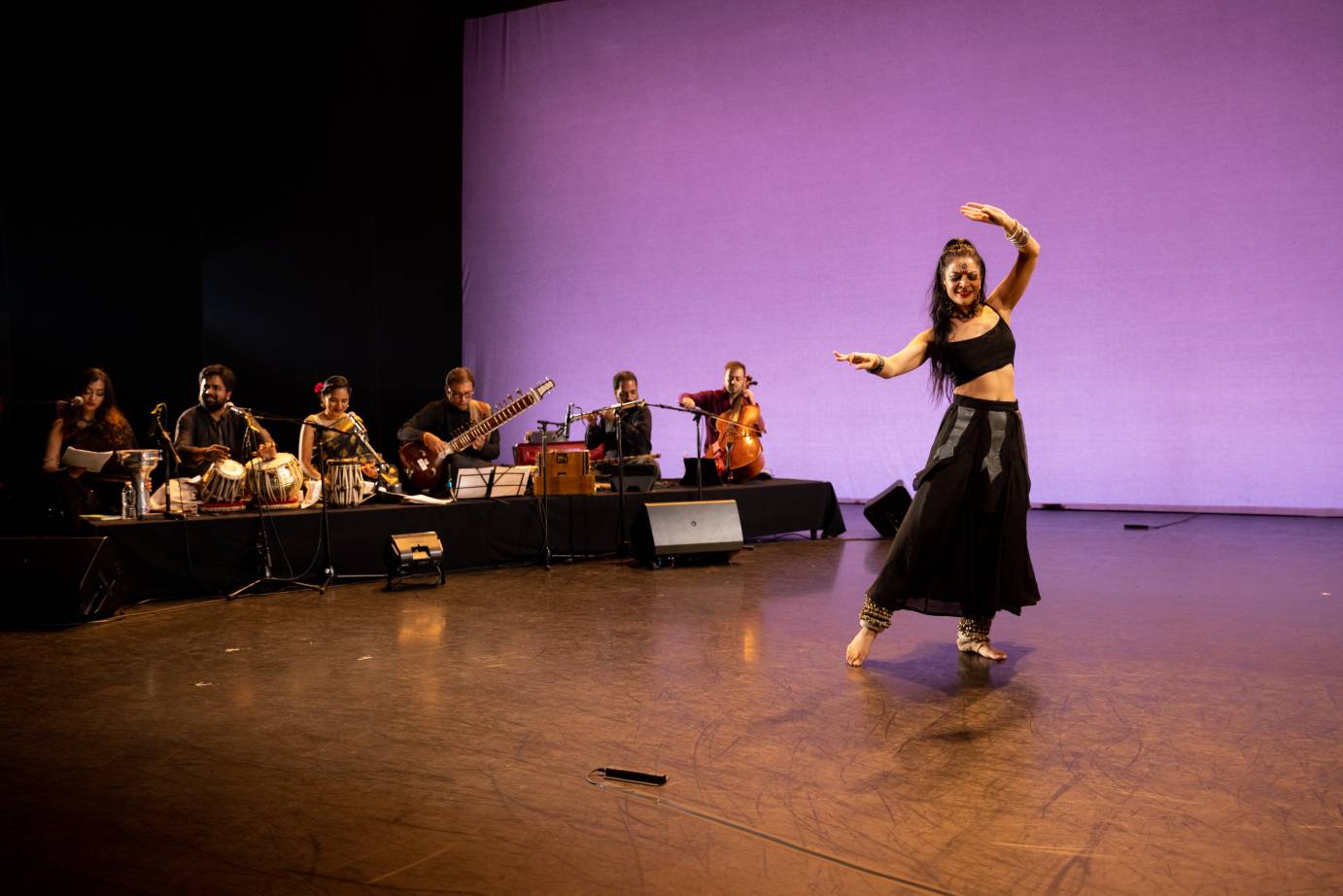
What is the significance of the guru?
I’m aware that the term ‘guru’ has many complicated feelings for many amongst the next generations. Evolution is inevitable and a good thing. Having a staunchly closed and hierarchical system can lead to unhealthy power dynamics. It can lead to idolatry and blindly performing customs and rituals without understanding the deeper meaning behind them. And those in power can abuse that power. Even my guru was highly aware of this.
Touching the feet of the guru is a fundamental custom performed in India. My guru did not allow us to touch his feet and waited many years before a student could call him Guruji. In the 17 years I knew him, I think I touched his feet three times – he allowed it sometimes when he could feel the purity and earnestness of the moment rather than to please him or as an obligation.
What does a guru look like today?
I am figuring out what a guru looks like today. Evolution is one thing, but to discard the tradition entirely in the name of modern thought, is a tragic loss.
What I do believe is that we train in the spirit of the guru and pupil value system. The knowledge must be transmitted human to human and the relationship nurtured. And that nurturing goes two ways. Both the teacher and student are learning from one another. My methods may be a little different from my guru (and not as harsh) but the concepts and accountability for excellence remain.
Indian Classical Dance seems to be danced primarily by women. In honor of March as Women’s History Month, could you please explain this?
Kathak is a two-thousand-year-old art form. It evolved from storytelling minstrels. It was brought into the temples and then moved into Mogul courts, when Persians ruled India for 400 years (6th – 4th centuries BCE), particularly north Indian. It evolved into a form of entertainment and became a unique amalgamation of Hindu and Persian art. Many of the dancers were female courtesans known as tawaif, and like geishas, highly respected and esteemed. They held the ultimate authority in music, dance, and etiquette. Upper echelon courtesans even owned property and were quite powerful.
Then, under British rule, dance was outlawed. Many forms didn’t survive since the forms are deeply passed down from master to disciple. Kathak dance was systemically disenfranchised by the British and considered inappropriate. The esteemed institution of tawaifs was degraded to common prostitutes and relegated to red-light districts. If you went to the red-light districts, however, you’d see the highest level of art being practiced because that’s where it survived. From the late 1800s to the mid 1900s only the very poor and the very rich had access to the art.
Due to the puritanical movement during this time, Indian culture became much more conservative. In my grandmother’s era these classical Indian dance forms had a stigma associated with prostitution. My mom’s generation wanted to learn dance, but their mothers did not allow it. The men became the more visible gurus and the women were erased entirely. Then came Indian independence in 1947, a movement that began in 1920s where there was a reclaiming of Indian tradition. Many of those male dancers were able to benefit from the end of the patronage system of India but my guru was the last generation. Today, you see more women dancers because of the western stigma of men dancing, implying that its effeminate. The stigma has been reversed.
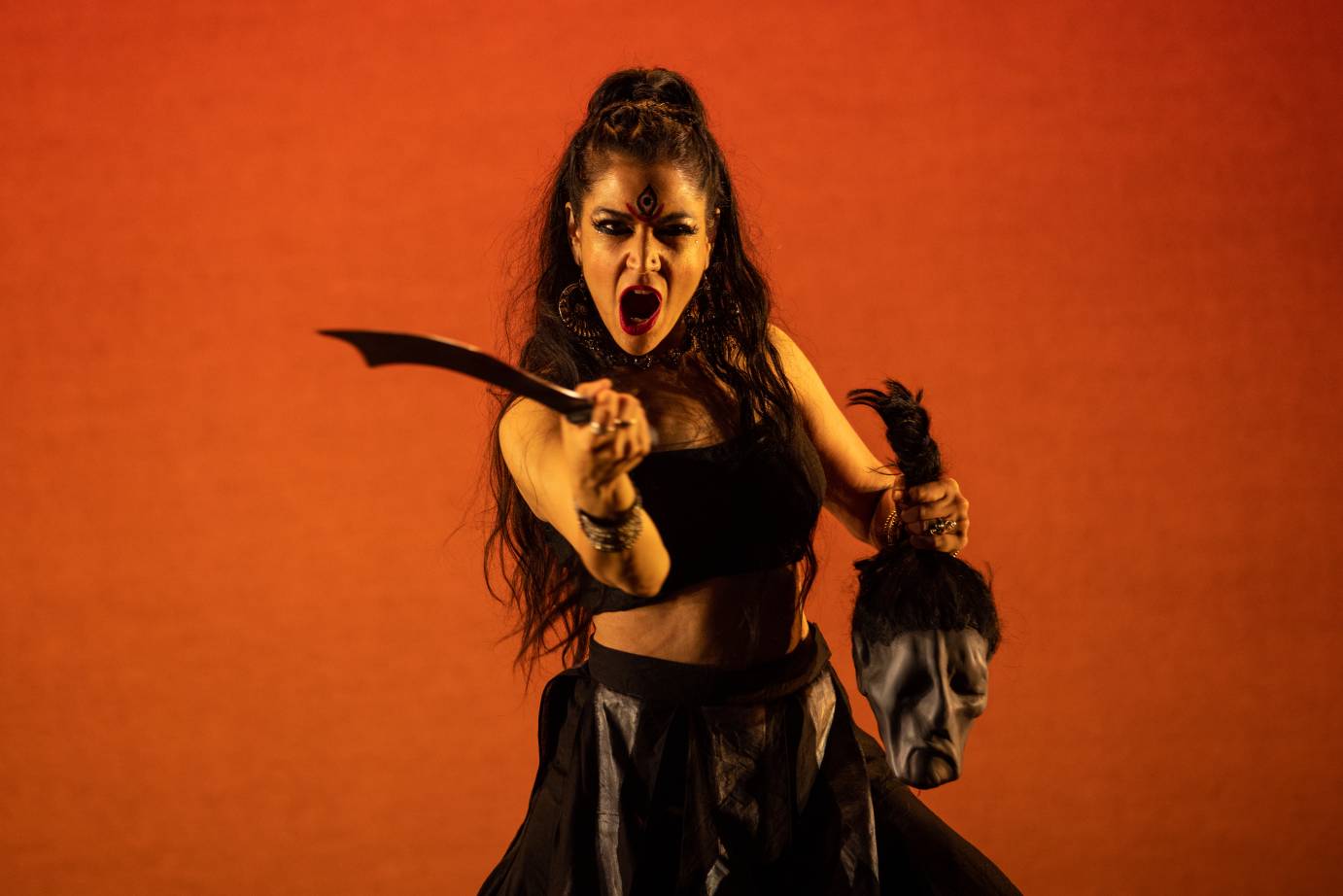
What can we expect as audience members of “Reclaiming The Divine Feminine?”
In this work I am tackling a heavy topic of Goddess Kali, who in tantra philosophy is the Goddess of time and death and who personifies the many paradoxes of feminine wholeness. She is intoxicating and terrifying, beautiful and grotesque, ascetic and erotic, loving and rageful. She is a symbol of the untamed woman that patriarchal society sees as dangerous. Her intense imagery demands confrontation of uncomfortable parts in our psyches, opening us to her light of transformation.
Tantra is birthed in rural and tribal India and has been denigrated in the west to be about sex and eccentric practices. Even in India tantra is not really understood. But what struck me the most is its radical hailing of feminine energy as the supreme reality. That masculine energy is only experienced and lived through female energy.






